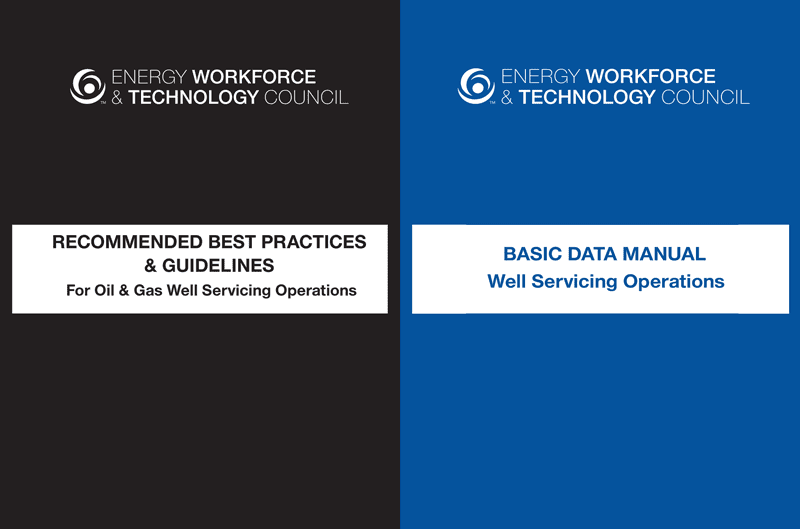Today, Energy Workforce & Technology Council is releasing the latest editions of its industry-leading reference manuals for Well Servicing in the oil and gas sector.
The Energy Workforce Well Servicing Committee has updated and improved upon the Basic Data Manual for Well Servicing Operations (blue book), in addition to revising and modernizing the Recommended Best Practices and Guidelines for Oil and Gas Well Servicing Operations. These updated versions will now be available to Energy Workforce Members as well as others across the industry.
“Energy Workforce is at the forefront of providing its members and the sector with vital information that allows for shared best practices across the industry, which will streamline operations and improve safety. These updates are the result of years of work by the Well Servicing Committee and would not be possible without the technical expertise and time that has been volunteered by this group for the benefit of the entire sector.”
Tim Tarpley, President, Energy Workforce & Technology Council
The Basic Data Manual includes information vital to well control servicing, including conversion factors and quick reference formulas, equipment specifications and much more. The manual provides the energy services industry with a single source of data to easily reference in day-to-day operations that can be quickly accessed in the field. This manual has been the industry standard for decades and, with this update, will continue to be the go-to for the sector for many years to come.
“For the health, safety and success of well servicing crews, they need the most up-to-date information to keep up with the new technologies and practices used at the wellsite and updating these manuals will provide that level of data, readily available to our workforce.”
Well Servicing Committee Chair Matt Hooker, Senior Vice President, Ranger Energy Services
The Recommended Best Practices Manual contains guidelines and best practices for the well servicing sector including HSE, general practices and procedures, hazard mitigation, fleet safety, electric wireline safety and offshore/inland water operations.
Ken Houston, Vice President QHSE, Key Energy Services, and Gary Olliff, Chief Operating Officer, Brigade Energy Services, worked on the committee that updated this information and their expertise in the field was essential in developing these manuals.
“In my experience, having this data available has been essential to well servicing crews. I’m excited that we have been able to update and produce these manuals to provide our sector with industry leading information in an easy-to-use format that is readily available at the worksite.”
Ken Houston, Vice President QHSE, Key Energy Services
Olliff also commented on the importance of the updated data available in the manuals.
“For success in the field, crews need the best information available. It has been an honor to be a part of this team that is bringing the exact information that is needed to maintain a safe work environment while providing data that is imperative to positive outcomes in well servicing.”
Gary Olliff, Brigade Energy Services
Energy Workforce continues to be the industry leader in sharing best practices across the energy services sector. The manuals are now available for pre-order here.






